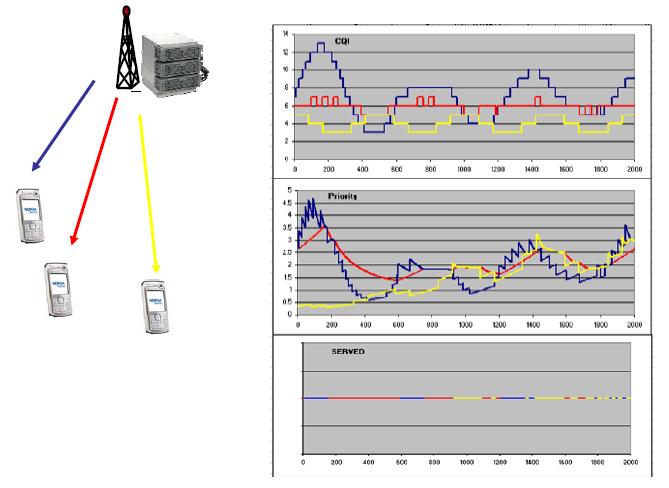Scheduler types in LTE
A variety of scheduling strategies is available in LTE. The scheduling strategy is based on a certain metric.
– Round-Robin.
No quality indication is taken into consideration. The resources are mainly shared in an equal manner.
– Max C/I.
The UE with the best channel conditions gets the highest priority. The cell throughput is maximized. Starvation of UEs with channels of low quality may be a disadvantage. C i= Qi (1).
– Proportional Fair.
This algorithm defines priorities based on the quality and the averaged scheduled rate. I.e.:
Ci = R(Q)i/{Ri} (2).
– QoS
Different strategies exist to get QoS related information integrated.
E.g. Depending on the priority of the service and/or the UE, RT/NRT service type. a scheduling weight can be introduced.
Ci = Pi (3).
Combinations of the different types can also be applied.
Scheduler Types in LTE
In LTE, several types of schedulers are used to allocate resources efficiently. These include proportional fair scheduling, which balances fairness and throughput, and round-robin scheduling, which allocates resources evenly across users. Additionally, maximal throughput scheduling prioritizes users with the best channel conditions, while oldest-first scheduling favors users with pending data to minimize delay. Each type aims to optimize resource utilization and network performance based on specific goals.
